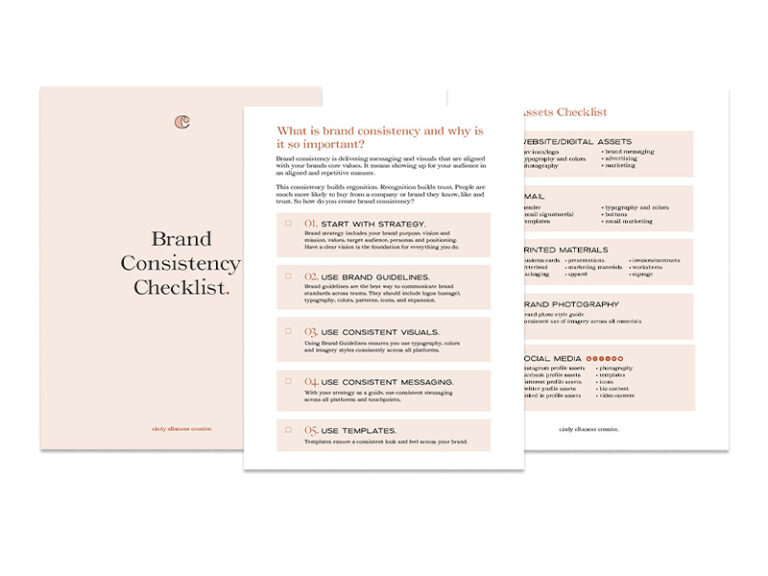Free Brand Consistency Checklist

What is brand consistency and why it is so important?
Brand consistency is telling the same story at every touchpoint. Showing up for your audience in an aligned and focused manner.
This consistency builds recognition. Recognition builds trust. Trust builds loyalty. People are much more likely to buy from a company or brand they know, like and trust.
Every interaction a person has with your brand tells a story. You want to make sure you are consistent with your messaging, visuals and brand voice.
So how do you create brand consistency?
01. Start with strategy. Brand strategy includes your purpose, vision, mission, values, target audience, personas and positioning. Having a clear vision is the foundation for everything you do. I created a free workbook to get you started.
02. Use Brand Guidelines. Brand Guidelines are the best way to ensure consistency across platforms and teams. They should include logos, typography, colors, patterns, icons and expansion.
03. Use consistent visuals. Using brand guidelines, ensures your visual elements have a cohesive look and feel.
04. Use consistent messaging. With your strategy as a guide, use the same brand voice across all platforms and touch points.
05. Use Templates. Templates ensure a consistent look and feel across your brand.
Brand consistency is telling the same story at every touchpoint. It builds trust and credibility.
I created a brand assets checklist for use in creating consistent visuals.
It includes:
01. Website/digital assets. This includes fav icon/logo, typography, colors, photography, brand messaging, advertising and marketing.
02. Email assets. Header, email signatures, templates, typography, colors, buttons and email marketing.
03. Printed materials. Examples of printed materials include business cards, letterhead, packaging, presentations, marketing materials, apparel, invoices/contracts, worksheets, signage and more.
04. Brand photography. Brand photo style guide, consistent use of imagery styles across all materials.
05. Social Media. Instagram profile assets, facebook profile assets, pinterest profile assets, twitter profile assets, linked in profile assets, photography, templates, icons, bio content and video content (youtube, vimeo, etc).
I hope you find this free guide helpful in creating a more cohesive brand.

